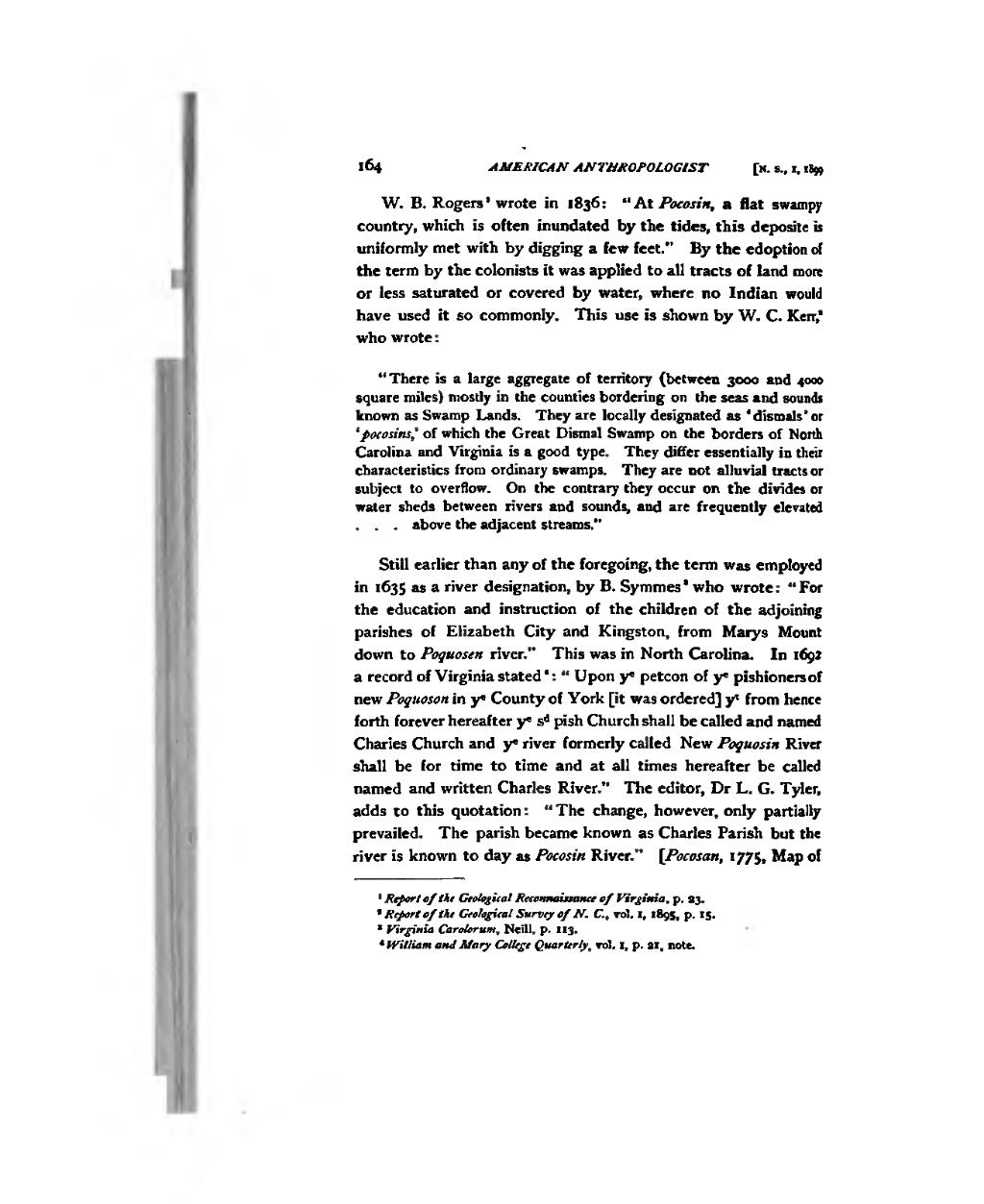164 AMERICAN ANTHROPOLOGIST [H. s., 1, 1899
W. B. Rogers' wrote in 1836: "At Pocosin, a flat swampy country, which is often inundated by the tides, this deposits is uniformly met with by digging a few feet." By the adoption of the term by the colonists it was applied to all tracts of land more or less saturated or covered by water, where no Indian would have used it so commonly. This use is shown by W. C. Kerr,' who wrote:
"There is a large aggregate of territory (between 3000 and 4000 square miles) mostly in the counties bordering on the seas and sounds known as Swamp Lands. They are locally designated as 'dismals 'or 'pocosins,' of which the Great Dismal Swamp on the borders of North Carolina and Virginia is a good type. They differ essentially in their characteristics from ordinary swamps. They are not alluvial tracts or subject to overflow. On the contrary they occur on the divides or water sheds between rivers and sounds, and are frequently elevated . . . above the adjacent streams."
Still earlier than any of the foregoing, the term was employed in 1635 as a river designation, by B. Symmes* who wrote: "For the education and instruction of the children of the adjoining parishes of Elizabeth City and Kingston, from Marys Mount down to Poquosen river." This was in North Carolina. In 1692 a record of Virginia stated ' : " Upon y* petcon of y* pishionersof new Poquoson in y* County of York [it was ordered] y 1 from hence forth forever hereafter y* s d pish Church shall be called and named Charles Church and y e river formerly called New Poquosin River shall be for time to time and at all times hereafter be called named and written Charles River." The editor, Dr L, G. Tyler, adds to this quotation : " The change, however, only partially prevailed. The parish became known as Charles Parish but the river is known to day as Pocosin River." [Pocosan, 1775, Map of
' Report 0/ the Geological Retonnaitiante of Virginia, p. 33.
- Report of the Geological Survey of N. C, vol. I, 189s, p. 15.
- Virginia Carolorum, Neill, p. 113.
- WUUam and Mary College Quarterly, vol. I, p. 31, note.
�� �
